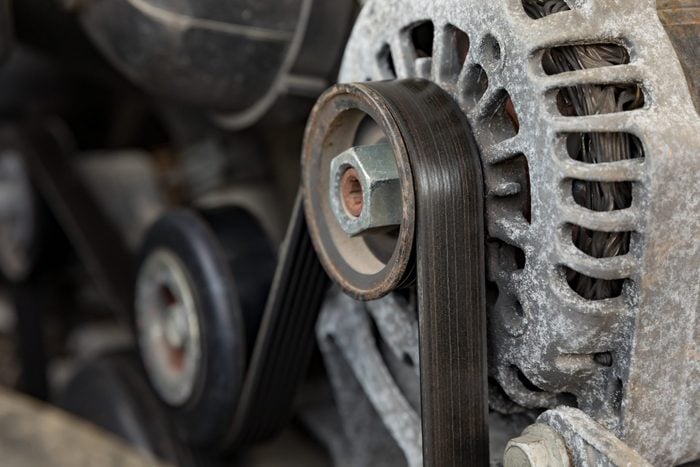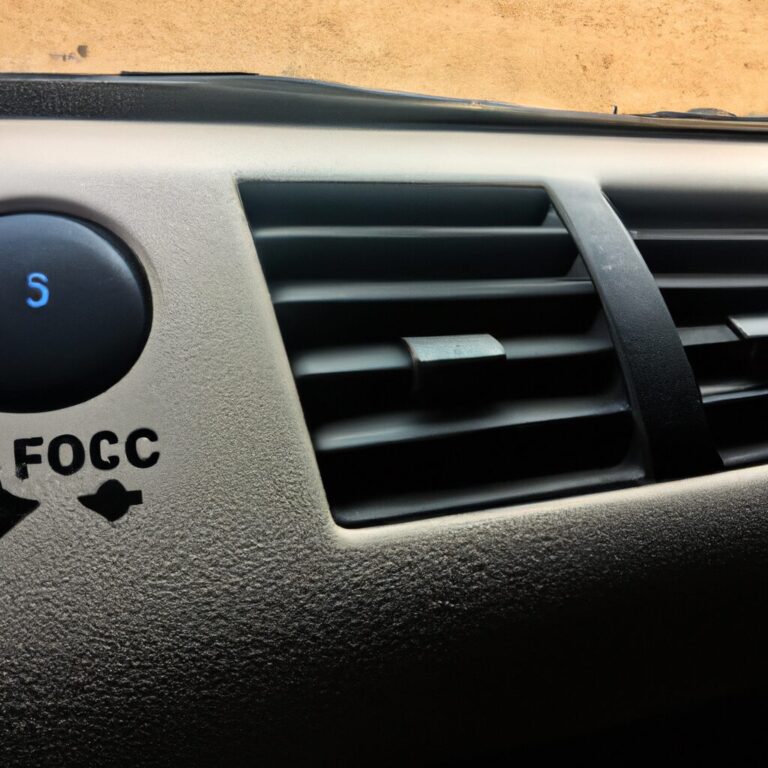Is It Safe to Drive With a Squealing Belt
It is not safe to drive with a squealing belt as it can lead to engine damage. The noise indicates a potential issue that needs immediate attention.
A squealing belt can result from wear and tear, improper tension, or fluid leaks. Ignoring the problem can cause the belt to break, leading to a loss of power steering, overheating, or even a breakdown. It is crucial to address the squealing noise promptly by having the belt inspected and replaced if necessary.
Safety should always be the top priority when it comes to vehicle maintenance. Addressing issues promptly can help prevent costly repairs and ensure a smooth driving experience.
Effects Of A Squealing Belt On Driving
Driving with a squealing belt can have adverse effects on the performance and safety of your vehicle. Understanding the potential consequences is crucial for maintaining both the efficiency and safety of your car. From decreased performance to an increased risk of breakdown, the impact of a squealing belt on driving is significant.
Decreased Performance
A squealing belt can lead to decreased performance, affecting the overall operation of the vehicle. Slipping or worn-out belts can cause the systems they power, such as the alternator, power steering, or water pump, to function improperly, leading to compromised performance during driving.
Increased Risk Of Breakdown
Continuously driving with a squealing belt increases the risk of a breakdown. A neglected squealing belt can snap or fail, resulting in sudden loss of power steering, electrical power, or engine cooling, which can lead to potentially hazardous driving situations.

Credit: www.familyhandyman.com
Causes Of A Squealing Belt
Worn Or Loose Belt
When a belt becomes worn or loose, it can generate a squealing sound while driving.
Misaligned Belt
A belt that is misaligned with the pulleys can cause squealing due to friction.
Damaged Belt Tensioner
If the belt tensioner is damaged, it may not maintain proper tension, leading to squealing.
Potential Consequences Of Ignoring A Squealing Belt
Ignoring a squealing belt can lead to serious consequences for your vehicle’s engine. It is not safe to drive with a squealing belt as it can result in engine damage, loss of power steering, and potential breakdowns on the road.
Regular maintenance and immediate attention to this issue are crucial to ensure your safety on the road.
Damage To Engine Components
A squealing belt can lead to severe damage to essential engine components.
Loss Of Power Steering
Ignoring a squealing belt can result in the loss of power steering, making it difficult to control the vehicle.
Overheating
If left unrepaired, a squealing belt can cause the engine to overheat, leading to potential mechanical failure.

Credit: m.youtube.com
Steps To Address A Squealing Belt
Is it safe to drive with a squealing belt?
When your car’s belt starts to squeal, it’s a clear sign that something is amiss. Ignoring this issue can lead to more serious problems and potential safety hazards. Addressing a squealing belt promptly is crucial to ensure the smooth and safe operation of your vehicle. Here are the essential steps you should take to tackle a squealing belt.
Inspect And Diagnose The Belt
The first step in addressing a squealing belt is to inspect and diagnose the condition of the belt. Look for signs of wear, cracks, or fraying. A visual inspection can reveal if the belt is misaligned or if there are any foreign particles causing the squealing sound. Additionally, check the tension of the belt to ensure it is within the manufacturer’s recommended specifications.
Tighten Or Replace The Belt
If the belt is in good condition but is loose, it may simply require tightening. Refer to your vehicle’s manual for the specific tension requirements and use the appropriate tools to adjust the tension to the recommended level. However, if the belt is worn or damaged, it’s crucial to replace it promptly to prevent further damage to the engine components and ensure safe driving conditions.
Align Or Replace Belt Components
It’s essential to check the alignment of the belt components, such as pulleys and tensioners. Misaligned components can cause the belt to squeal. Use a straight edge to check the alignment and make adjustments as necessary. If the components are worn or damaged, it’s best to replace them to ensure the smooth operation and longevity of the belt.
Preventative Measures To Avoid A Squealing Belt
Welcome back to our blog series on maintaining car belts! In our previous post, we discussed the dangers of driving with a squealing belt. Today, we will focus on preventative measures to avoid this issue altogether. By taking the necessary precautions, you can ensure your belt stays in excellent condition, keeping you safe on the road. In this post, we will cover regular belt maintenance, avoiding exposure to excessive moisture, and maintaining proper belt tension. Let’s dive in!
Regular Belt Maintenance
Regular maintenance is key to preventing a squealing belt. By keeping an eye on your belt’s condition, you can catch any potential issues early on. Here are a few maintenance tips to follow:
- Inspect your belt for cracks, fraying, or signs of wear, and replace it if necessary.
- Ensure that your belt is properly aligned with the pulleys and is not twisted or misaligned.
- Check for any signs of belt contamination, such as oil or grease, as this can lead to slipping and squealing.
Avoiding Exposure To Excessive Moisture
Excessive moisture can wreak havoc on your car’s belts, causing them to slip and squeal. To avoid this issue, follow these preventive measures:
- Always park your car in a dry, sheltered area to prevent exposure to rain, snow, or extreme humidity.
- Regularly inspect the engine compartment for any signs of water leaks or condensation buildup. If you notice any, have them repaired promptly.
- During car washes, cover the belts to protect them from water and cleaning solutions.
Maintaining Proper Belt Tension
Proper belt tension is crucial for smooth operation and to avoid squealing. Here’s what you can do to maintain the right tension:
- Refer to your car’s owner manual or consult a professional mechanic to determine the correct belt tension specifications for your specific make and model.
- Regularly check the belt tension using a tension gauge, ensuring it is within the recommended range.
- If you notice any signs of belt slippage or excessive tension, have it adjusted by a qualified technician.

Credit: m.youtube.com
Frequently Asked Questions On Is It Safe To Drive With A Squealing Belt
How Long Can You Drive With A Squealing Belt?
Driving with a squealing belt is not recommended. It can lead to further damage and should be checked by a mechanic as soon as possible.
How Urgent Is A Squeaky Belt?
A squeaky belt should be addressed promptly to prevent damage to the engine. Have it checked by a mechanic.
Should I Drive My Car If Its Squealing?
If your car is squealing, do not drive it as it could indicate an issue with the belt or pulley.
Will A Squeaky Belt Go Away?
Yes, a squeaky belt may go away on its own as it wears in, but it’s best to have it checked by a mechanic to prevent any potential damage. Regular maintenance can help prevent belt squeaking.
Can A Squealing Belt Damage Your Car?
Yes, a squealing belt can cause damage to your car’s engine and other components if left unresolved.
What Causes A Belt To Squeal In A Car?
A belt may squeal in a car due to improper tension, wear and tear, or a lack of lubrication.
Is It Normal For A Belt To Squeal Occasionally?
No, it is not normal for a belt to squeal occasionally. Persistent squealing indicates a problem that needs attention.
Conclusion
Driving with a squealing belt poses risks to your safety and vehicle performance. Addressing the issue promptly can prevent further damage. Regular maintenance and immediate attention to belt problems are key to a smooth driving experience. Don’t neglect these warning signs for a safe and enjoyable ride.



